#seigneury
Explore tagged Tumblr posts
Text
"Later that month, Dunning was named vice-president of Lucerne-in-Quebec, a CPR company that operated the Seigniory Club, an exclusive resort on the Ottawa River in Montebello, Quebec. Describing Dunning’s new duties, Harry Sifton explained: “He builds roads, excavates for swimming pools, sells land and has a great time, getting $25,000.00 a year for doing it.” “I am in the happy position of having more work than I can comfortably handle,” Dunning explained to a friend, “which always represents a condition of real happiness for me.” From a western regional perspective, little ambiguity remained: Dunning had “become an easterner.” ... The Lucerne-in-Quebec Seigniory Club at Montebello was not merely a moneymaking project; it was also a project of class consolidation. Taken over by the CPR from a U.S. syndicate, it was seventyfive miles west of Montreal and forty-five miles east of Ottawa, conveniently located between Canada’s centres of economic and political power and “easily accessible by Canadian Pacific Railway, or by Montreal-Hull-Ottawa highway, Quebec Route 8.” Dunning was, in a sense, ideal to manage the project, since he was already familiar with the Montreal-Ottawa axis that the Seigniory Club served and helped consolidate. Encompassing an area of 80,000 acres stretching into the Laurentian Mountains, the club was a planned community that offered exclusive hunting and fishing rights to its members, golf, an array of seasonal activities, and an exclusive club atmosphere. Beatty encouraged Prime Minister Bennett to treat “Lucerne as a suburb of Ottawa” during the Imperial Economic Conference in 1932 and argued it was a “convenient … place for the residence of delegates or advisers while the Conference is proceeding.” During the Second World War, Algoma Steel president Sir James Dunn spent much of his time at Montebello to stay close to Ottawa, where the steel controller and minister of munitions and supply, C.D. Howe, became “[a]nnoyed by the steel president’s frequent, unannounced appearances at his office.” This moneyed preserve had been a seigneury, as the club’s name suggested – that of Louis-Joseph Papineau, the famous patriote of the Lower Canadian Rebellion whose descendants could no longer afford the manor’s upkeep and auctioned it in 1929. Resold to the Lucerne-in-Quebec Community Association Limited, Papineau’s chateau was converted into a clubhouse with a large ballroom, a billiards room, and a mock-Elizabethan tavern. A promotional booklet emphasized Papineau’s role as a parliamentary reformer and reimagined the organic structure and aristocratic tenor of life on the seigneury; the property was thus not only legally appropriated but intellectually appropriated as well. Moneymaking and the maintenance of social exclusivity: one reinforced the other, since attracting the “right” people would make membership more desirable for others. Beatty encouraged CPR directors to join the club for that reason. “I have already told Mr. Dunning to send application forms to Sir Herbert Holt, Sir Charles Gordon, Mr. Tilley and myself,” explained Beatty to Stelco president Ross H. McMaster, also a CPR director. “He has already received an application from Senator Beique,” continued Beatty, “and applications for membership will also be sent to Mr. R.S. McLaughlin, Colonel Frank Meighen, Colonel Cockshutt and other members of our directorate. As you will appreciate this support should be of great value in the sale of lots, and if you feel free to take a lot, I would naturally be very glad.” Jews, meanwhile, were excluded, a policy that reflected the ubiquity of upper-class anti-Semitism during the period, and the procedure to gain membership ensured that only those with the requisite wealth and social standing would gain admittance. “Membership in the Seigniory Club and Lucerne-in-Quebec community is both selective and exclusive,” proclaimed a promotional booklet."
- Don Nerbas, Dominion of Capital: The Politics of Big Business and the Crisis of the Canadian Bourgeoisie, 1914-1947. University of Toronto Press, 2013. p. 93-95
#seigniory club#montebello#outaouais#gentleman's club#seigneury#canadian elite#capitalism in canada#elite canadians#dominion of capital#canadian pacific railway#montreal#ottawa#antisemitism in canada#great depression in canada#railway capitalism#academic quote#reading 2023
0 notes
Video
youtube
Welcome to la Seigneurie, in the Heritage Estate, L'Orignal! Presented b...
#youtube#Prestigious La Seigneurie in the Heritage Estate l’Orignal: 2021 Stunning custom bungalow between Ottawa & Montreal Eastern Ontario! 2600 S+
0 notes
Text
A HOLIDAY FROM HELL
The location was great, easy access to both Switzerland and Germany. The setting was nice, surrounded by a forest. The swimming pool was great. But all of this came with a price, the Thursday night “entertainment”. Welcome to Camping du Lac de la Seigneurie. The start wasn’t good, the people running the camp also didn’t fix a window we asked them to mend, despite promising they would. On the…

View On WordPress
#Alsace#camping#Camping du Lac de la Seigneurie#campsites#chanson francaise#holiday#holiday France#holiday from hell
0 notes
Photo

Open - Library Inspiration for a large contemporary open concept light wood floor, brown floor and exposed beam family room library remodel with white walls, a standard fireplace, a stone fireplace and a tv stand
0 notes
Photo

Open Library Example of a large, modern, open-concept family room library with white walls, a stone fireplace, a regular fireplace, and a TV stand. The floor is brown, and there are exposed beams throughout the room.
0 notes
Text
The railway line owned by CN connects Montreal to Halifax, where protesters claim goods are shipped to Israel.
Local Longueuil police said that they received a 911 call at about 10:05 a.m. They asked protesters blocking the tracks at the intersection of Sir Wilfrid Laurier and Seigneurial boulevards to move. According to police spokesperson Melanie Mercille, after protesters refused to move, the police’s emergency intervention unit broke up the barricade an hour and a half later.
Police say four officers were struck by their own pepper spray and four people, both men and women in their 20s and 30s, are facing charges ranging from obstruction to assault.
[...]
In a press release, a group called the Ad-hoc BDS Direct Action Collective blamed CN Rail for helping transport goods to Israel, which they accuse of genocide in its conflict with Hamas. According to the release, the blockade was meant to “temporarily interrupt trade by shutting down a vital artery and draw attention to Canada’s material support, and inspire further boycott, divestment, and sanctions direct action.”
Continue Reading
Tagging: @newsfromstolenland
#free palestine#bds movement#palestine#montreal#quebec#cdnpoli#canadian politics#canadian news#canada
101 notes
·
View notes
Text
"The French Revolution, therefore, assumes a unique place in the history of the contemporary world. As the classic bourgeois revolution, abolishing feudalism and the seigneurial system, it forms the point of departure for capitalist society and liberal democracy in the history of France. As a revolution of the peasants and the masses, and therefore uncompromisingly antifeudal, it twice transcended its bourgeois limits: first during Year II, an experiment which, though necessarily doomed to fail, long retained its power as a prophetic example; then with the Conspiracy of the Equals, an episode that marks the birth of present-day revolutionary thought and action. These essential characteristics probably explain the vain efforts that have been made to deny the true historical nature and the specific social and national character of the French Revolution, for it is a fertile and dangerous precedent. Hence also the shudder that the French Revolution sent throughout the world, and the continued reverberation that it arouses in men's minds even today. The very memory of it is revolutionary, and stirs us still."
-Albert Soboul, A Short History of the French Revolution, 1789-1799
#saw there was some discussion going on about whether the frev was bourgeois or not#and i just finished reading this book#so i thought it would be topical to post some Professional Marxist Analysis :]#french revolution#frev#conspiracy of equals#albert soboul
161 notes
·
View notes
Text
'To succeed as you want, you have to be precise; you have to have polish; you have to carry polish and precision into everything you do. You have no time to sigh over seigneuries and begrudge other people their gifts. Lack of genius never held anyone back,’ said Lymond. ‘Only time wasted on resentment and daydreaming can do that. You never did work with your whole brain and your whole body at being an Archer; and you ended neither soldier nor seigneur, but a dried-out huddle of grudges strung cheek to cheek on a withy.’
Francis Crawford of Lymond, in Queens Play (Lymond Chronicles #2)
I think about this line a lot... Do I feel personally attacked by it? Yes, yes I do. Not the dried out huddle of grudges bit, but, the principle of needing to really do your best at everything you're given to do... And to cap it off, it's SO BEAUTIFULLY said.
Queens Play is really just stunning.
#lymond chronicles#francis crawford of lymond#queens play#i mean#OUCH#when i read this the first time i think i physically winced#its BRUTAL#but the principle is so true#and so beautifully written i could cry#dorothy dunnett#random quotes i love
23 notes
·
View notes
Note
In your post on 10 August you correctly pointed out how often the violence under the Ancien Régime gets always overlooked and you mentioned the Beast of Gévaudan, the deliberate repressions by Louis XIV or Louis XVI, the repression of the Flour War. What happened during these events?
Warning: Regarding the case of the Beast of Gévaudan, there are some shocking elements related to the criminal investigation. So, please refrain from reading if you feel uncomfortable with this. Sensitive souls should refrain from reading this part of text. I want to mention that I am not very knowledgeable about the Ancien Régime, so feel free to correct or add to what I say (especially regarding the Flour War).

Dragonnades under the reign of Louis XIV to force Protestants to convert to Catholicism ( The engraving dates from 1686 and is by Engelmann, Les nouveaux missionnaires)
Ah, here we are again, discussing the Ancien Régime. There are many things to say (some of which are positive; we should also fight against the demonization, but I will limit myself to starting with the period under Louis XIV rather than Henri IV).
Louis XIV, what can be said? Well, ironically, if we want to better study the issues that led to the Revolution, it starts with him (in my eyes). I will quickly touch upon his reign and the reasons why he wanted an absolute regime (due to the trauma he experienced as a child during the trials he endured during the Fronde, under the regency of his mother and Cardinal Mazarin). One day, I came across a phrase on a forum that I found revealing about the reigns of Louis XIV, Louis XV, and Louis XVI. It said something like, "Louis XIV creates the debt, Louis XV manages it and passes it on to his successor (Louis XVI), who, due to his character and actions, causes the Revolution to break out." Although reality is more complex, I think this phrase aptly describes the origin of the massive debt of the Kingdom of France.
His wars financially drained the kingdom of France, showing that, in reality, wars of conquest can be more harmful than beneficial due to their expenses, especially if the territories do not bring in revenue (at least when Tsar Peter the Great waged war against the Turks, it was to gain access to the Sea of Azov for long-term commercial purposes). By the end of his reign, the state was financially ruined, all due to excessive conquests and wars that could have been avoided. Let's not even talk about horrific episodes like the Sack of the Palatinate in 1689 and how he alienated foreign powers. Here’s what Voltaire had to say on the subject: "This beautiful country was ravaged under Louis XIV for the second time; but the flames with which Turenne had burned two towns and twenty villages in the Palatinate were mere sparks compared to this final conflagration. Europe was horrified. The officers who carried it out were ashamed to be the instruments of such cruelties" (excerpt from The Age of Louis XIV).
This led to several revolts due to the increasing tax burden, the most notable of which was in Brittany. It is important to note something about Brittany and taxes. In 1491, Duchess Anne of Brittany married Charles VIII. France then annexed the Duchy of Brittany, but in return, Brittany retained a fiscal system specific to the former duchy, and no additional levies could be imposed without the agreement of this former duchy.
Louis XIV violated this fiscal exception and increased taxes as part of his war against Holland. This led to what would be called the Revolt of the Red Bonnets in Brittany, and across France (as there were other zones of insurrection like Grenoble, Bordeaux, Pau, Besançon), it would be known as the Stamp Paper Revolt in 1675, triggered by the ever-growing misery of the population. The revolt in Brittany was the most significant, with castles being attacked and uprisings against their lords. On July 2, the rebels demanded the abolition of seigneurial abuses, among other things, and proclaimed a Peasant Code, which included a series of texts, some of which apparently echoed aspects of the grievance lists of 1789.
The repression in Brittany was brutal. Six thousand men were sent to crush the rebellion. There were hangings, and some were sent to the galleys. The body of one of the leaders, Le Balp, was exhumed to be desecrated. Other leaders were tortured before being executed. The suburb of Saint-Malo was deemed too rebellious.
In October 1675, the city experienced violence, apparently at the hands of Louis XIV’s troops. Residents of certain streets were expelled to the point where the Marquise de Sévigné wrote, "Do you want to know the news from Rennes? An entire large street was driven out and banished, with the threat of death if they were taken in, so that one could see all these miserable people—old men, women who had just given birth, children—wandering in tears as they left the city." On February 5, 1796,
In his absolute control, Louis XIV sought to annihilate any rebellion. Under Louis XIV, there were 40,000 deserters, Protestants, counterfeiters, and salt smugglers condemned to the galleys, which was a horrific ordeal.
For criticizing absolutism, the theologian and tutor of the king’s grandson, Fénelon, fell out of favor. To better eliminate any opposition, a new position of Lieutenant General of Police was created in Paris, tasked with not only surveillance but also reforming justice to extend cases that could be judged directly by the King’s judges. During the inquisitorial process, the investigation was secret (which, as a law student, I admit can have both positive and negative aspects) and confessions were extracted, including through the use of torture (terrifying and horrible).
The Code Noir of 1685 authorized and even justified slavery with the goal of increasing the production of mineral and agricultural wealth.
The Edict of Nantes, which had allowed Protestants to live in peace, was revoked by Louis XIV. This led to the "dragonnades," a method in which "dragons," or royal soldiers, were forcibly quartered in the homes of Protestants considered heretics, using all possible means to force them to convert. I can hardly imagine the brutalities committed in the homes of these victims to obtain so many abjurations from the Protestants so that these soldiers would leave.
When Louis XIV died, he was deeply unpopular. Misery was widespread, and the peasant class could barely survive. In the event of climatic accidents, famine and mortality rates were extremely high, particularly in 1694 and 1709.
It is easy to see that the seeds of the Revolution were already being sown under Louis XIV. In 1694, there was the Red Bonnets uprising, and barely a century later, the Revolution and the overthrow of the monarchy, and the uprising of the slaves. We can clearly see where the first seeds of the Revolution began to germinate.

The fight of Marie-Jeanne Vallet, known as the “Maid of Gévaudan”, against the beast. Sculpture by Philippe Kaeppelin.
Now we come to the case of Louis XV, and one example that struck me the most about the dysfunction of the country is the affair of the Beast of Gévaudan (though there are many others, and more important ones). This remains one of the most mysterious criminal cases that has never been solved. However, this example highlights another dysfunction of the Ancien Régime beyond slavery, famine, religious intolerance, and repression. It is simply the issue of security in the face of the crime that the lower class suffers in certain areas.
France had just come out of the Seven Years’ War (an extremely deadly conflict), relatively defeated by England and financially ruined. The incident took place in the county of Gévaudan (which is in the province of Languedoc). The area included the Margeride, a difficult-to-access region with mountain ranges and marshes. In Gévaudan, life was harsh, predominantly populated by peasants; life was very tough, life expectancy was very short, children started working very early, and the peasant class primarily sought to survive.
But it’s the problem of crime that will be highlighted here (so I won’t go into too much detail about the affair of the Beast of Gévaudan). However, it’s necessary to explain this criminal case to better understand what follows. This case is complex, and the aim is not to explain it fully but rather to show the attitude of King Louis XV’s government, which tends to indicate what could be called willful criminal negligence. Therefore, the mystery of the Beast of Gévaudan is quickly summarized, and if you’re interested in understanding the case from an "investigative" perspective, you won’t find it here (it would take at least two to three pages), especially for suspects and theories explaining this mystery.
It all began in June 1764. A shepherdess living in Langogne was attacked by a beast. She owed her life to the cows that charged to protect their calves. The most striking thing is that the beast completely ignored the cows to focus solely on her. She survived, but it was the beginning of a long series of attacks. The beast was described as a wolf with a black stripe down its back (even today, it’s unclear whether it was a dog or a wolf). This was surprising because the inhabitants were always close to wolves, and no attacks had been recorded.
The beast went on to claim several victims, some of whom were horrifically devoured alive in front of helpless witnesses. Some survivors were scarred for life, and several children died.
Initially, King Louis XV took the matter very seriously: he sent one of his close associates, François Antoine, and enormous resources were employed. However, when the beast was not conspicuously absent, bullets seemed to bounce off it, or it got back up (one of the reasons for speculating that the beast had been trained by a human, as the black stripe could have come from a boar’s hide used as a protective cuirass against pistol bullets). Very questionable means (to put it mildly) will be used such as poisoning the corpses so that the Beast of Gévaudan eats it and poisons itself. But it doesn't work. Then, on September 20, 1765, François Antoine (or one of his aides) killed the beast. Witnesses and survivors of the attacks confirmed it was the Beast of Gévaudan (about twenty of them). However, it had killed on the other side of the river, where it had not been very active. Despite this, Louis XV declared that the affair was over and that the Beast of Gévaudan had been killed. And yet, after a period of calm due to the winter (when herds were less exposed), the attacks resumed with even greater intensity in the spring, with more and more victims. The attacks were concentrated mainly in the Margeride.
This is where we see the indifferent side of the Ancien Régime. For the monarchy, which had been ridiculed by the Beast of Gévaudan, the matter was closed. Officially, the Beast of Gévaudan had been killed, and with censorship in place, there was no mention of other attacks by the beast after 1765. On gravestones, it was now forbidden to say that a victim had been killed by the Beast of Gévaudan. There would be no more assistance, and the inhabitants were left to fend for themselves. One must be cautious, but we can speak of willful criminal negligence: to save face, the monarchy pretended to ignore the deadly attacks and even censored news about the affair. Fortunately, the Marquis d’Apcher continued to organize hunts to kill the beast at his own expense. But his resources were not those of a state and therefore very limited. The attacks officially ended in June 1767. A man named Jean Chastel ended the Beast’s life under strange circumstances (I don’t want to accuse deceased people with little evidence; it’s just that some facts make him seem suspicious, while others exonerate him, especially since in those superstitious times, he was looked down upon for reasons we’d find foolish today. For example, he apparently didn’t attend church much, although when Marie Danty, a 12-year-old girl with whom he was friendly, was devoured alive, he began attending church and had his bullets blessed. He could read and write, which was rare for someone of the lower class, and he was allegedly the son of a healer, whom some called a witch. On the other hand, when Marie Danty died, he swore he would be the one to kill the Beast of Gévaudan, and according to some witnesses, when the beast saw him, it simply sat down, whereas when it was present, it wouldn’t let itself be caught. Moreover, its black stripe had disappeared, although survivors had said it had one. However, I ask that we avoid making accusations against Jean Chastel out of respect for his descendants,while there is a high probability that he is innocent , we cannot make accusations without evidence).
Another frightening aspect of France in this affair is that not all the crimes were committed by the Beast of Gévaudan. It’s clear that at least several murderers committed acts that were blamed on the Beast, especially considering how some victims were killed. In fact, Margeride was notorious for its lack of security, its criminality, and the maréchaussée (mounted police) had only just been established, with many brigands or worse. The last crime attributed to the Beast of Gévaudan was actually committed by a human who killed a woman, Marianne Thomas, in 1777. The woman, in her agony, said it was the Beast. But in reality, it was a man disguised as the Beast, wearing fur, who had committed the crime. So, in addition to famine, it seems that the Ancien Régime either did not want to or failed to ensure that the maréchaussée was effective in protecting the lower class.
Another negative aspect of Louis XV’s regime was the continued religious fanaticism. During the attacks of the Beast of Gévaudan, some believed the beast was the result of divine punishment for the inhabitants’ sins (another theory said that the beast of Gévaudan was suckling a werewolf and that silver bullets were needed to kill it) . There was the infamous case of Calas, where a father was tortured to death because he was Protestant, accused on very doubtful, if not nonexistent, evidence. Then there was the affair of the Chevalier de la Barre, in which a young nobleman was tortured and executed for the crime of blasphemy (desecration of a crucifix) and it seems that it was not sure if it was him who did that, not to mention the sect of the White Penitents in Toulouse, who were a model of intolerance at that time. Additionally, the Church owned at one point 6% of the land in the Kingdom of France and profited from it, while the state coffers did not benefit. Not to mention other legitimate criticisms that could be made against the Church.
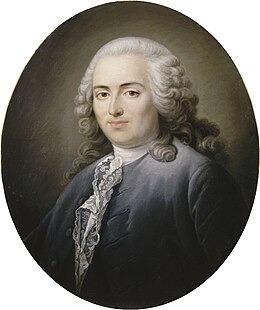
Anne Robert Jacques Turgot (French school, Palace of Versailles) (1727-1781)
Finally, here is the Flour War under Louis XVI. Ironically, the minister at the heart of these events was the most competent of Louis XVI’s ministers. Turgot is considered, in a way, a reformer (in fact, part of the nobility hated him for this), but also a liberal. There was much speculation because the monarchy was stockpiling grain. Turgot instead decided to impose the free circulation of grain. However, the poor harvests of 1773 and 1774 led to a significant increase in prices. This further deepened the misery of the peasants, as bread was their staple food. Consequently, riots broke out, with bakeries being looted and grain stocks seized. In response, 25,000 soldiers were deployed, leading to 548 arrests and the execution by hanging of two rioters: a 28-year-old wigmaker and a 16-year-old boy guilty of kicking a bakery door. The execution of these two scapegoats shocked the crowd.
So, my opinion on Turgot is that he was one of Louis XVI’s most competent ministers and the one who, among all his successors, had the people’s best interests at heart. But he was neither a political genius nor an engaged man like the revolutionaries who would take over after the Ancien Régime (at least many of them). I’m going to deliberately provoke by saying that if he was in the most committed political class concerning the Absolute Monarchy, he would likely have been on the far right during the French Revolution (though less conservative than Necker, for sure). But I’m probably being unfair because he died before we could know what he would have done, knowing that he didn’t play a false role as a friend of the people like Necker did, but rather acted more in favor of reforms, unlike the latter.
However, I must point out, in defense of Louis XV and Louis XVI, that absolutism had its limits in the form of the Parliaments, and they had to delegate certain powers to the Parliament. Yet, the Parliament opposed some necessary reforms for the people to ensure that the nobility could maintain its privileges while pretending to be friends of the poor people (we can clearly see where Necker learned this attitude).
P.S: I didn't mention the repression following the Reveillon affair, due to the events of April 26 to April 28, 1789 as it wasn't ask.
Sources: Antoine Resche For the Beast of Gévaudan: YouTuber Lionel Camy, who is very knowledgeable about criminal cases he explains. His video on the Beast of Gévaudan was excellent.But that does not prevent us from seeing historians given that Lionel Camy is more specialized in the analysis and theories of crime. Thierry Aprile
18 notes
·
View notes
Text

"Official to Probe Seigniorial Tithes," Montreal Star. July 26, 1943. Page 3. --- The Seigniorial Tithes Commission, under the chairmanship of Hon. T. D. Bouchard, Minister of Roads, at a sitting this morning at the government offices, named a special commissioner to investigate difficulties in the parish of St. Jean l'Evangeliste, county of St. Johns, regarding the "terrier" or land register, concerned with the abolition of tithes. Lucien Morin will investigate complaints and report to the commission.
This municipality is one of the few, according to the commission, where difficulties have arisen as regards the limits of the properties on which tithes were being paid.
#saint-jean-sur-richelieu#paroisse saint-jean-l'évangéliste#land register#abolition of tithes#feudal tithes#seigneury#histoire de quebec#canada during world war 2
0 notes
Text

Hestercombe House - Somerset County - England 🏴
Hestercombe House is a historic country house in the parish of West Monkton in the Quantock Hills, near Taunton in Somerset, England. The house is a Grade II* listed building and the estate is Grade I listed on the English Heritage Register of Parks and Gardens of Special Historic Interest in England.
Originally built in the 16th century, the house was used as the headquarters of the British 8th Corps in the Second World War. Somerset County Council assumed ownership in 1951 and use the property as an administrative centre. Hestercombe House served as the Emergency Call Centre for the Somerset Area of Devon and Somerset Fire and Rescue Service until March 2012.
Hestercombe House is surrounded by gardens which have been restored to Gertrude Jekyll's original plans (1904–07) and have made it "one of the best Jekyll-Lutyens gardens open to the public on a regular basis", visited by approximately 70,000 people per year. The site also includes a 0.08 hectare (8,600 sq ft) biological Site of Special Scientific Interest in Somerset, notified in 2000. The site is used as a roost site by lesser horseshoe bats.
The house was enlarged and altered in the 18th century, but this work is no longer visible beneath the refronting and enlargement works carried out around 1875 for Edward Portman, 1st Viscount Portman, who had acquired it in 1873
The house today appears an assemblage of several architectural styles popular during the Victorian era. While the overall design and air could be described as Italianate, also present in the same entrance facade are examples of high Victorian Gothic, such as an Italianate seigneurial tower confused in design with a campanile tower. This tower complete with a glazed loggia is crowned by a French-style mansard roof with oversized chimneys masquerading as Renaissance ornament. The centrepiece of the same facade is a porte-cochère designed in a heavy neoclassical style.
The Gardens and grounds are open to the public.
8 notes
·
View notes
Text

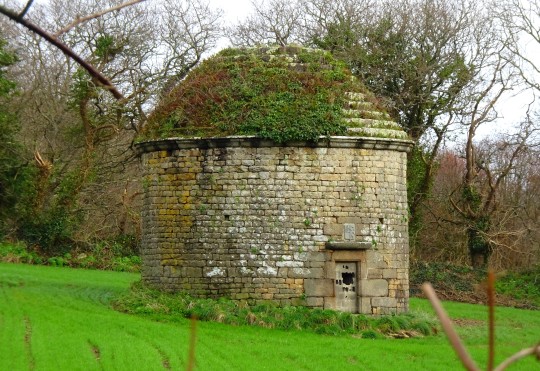
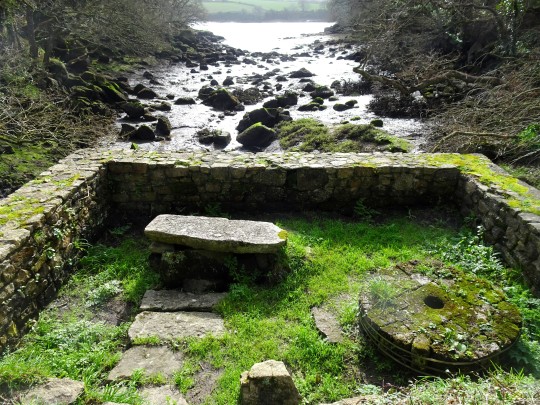


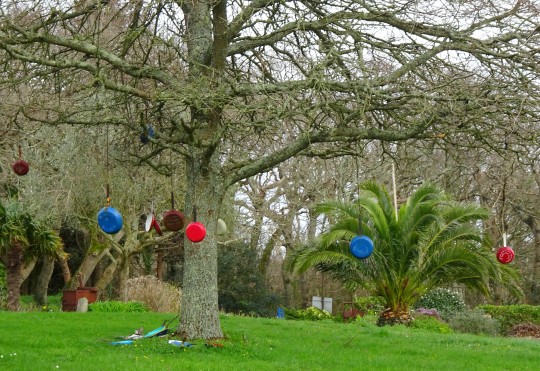
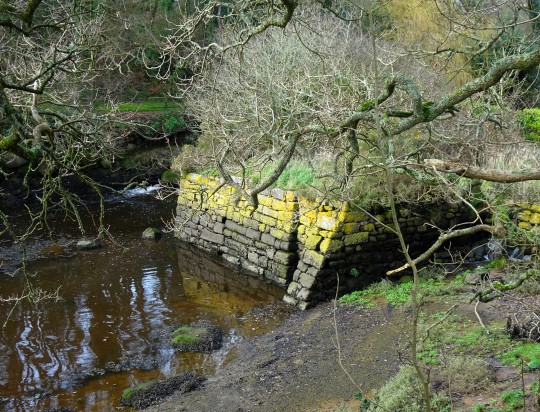
Troisième étape de mon périple dans l'Ouest pour retrouver des ami(e)s lointain(e)s : Christian en Bretagne, près de Brest, il y a un mois déjà.
Ici l'Aber Ildut, à Lanildut.
En 1, l'œil est une œuvre de Pierre Chanteau. Puis en 2, le pigeonnier du Manoir de Bel-Air (celui-ci, on le voit sur la 5). En 3 et 4, le moulin seigneurial de Roudouz (à roue horizontale, en pierre). En 6, l'auberge de Bel-Air puis le moulin du même nom (il ne manque plus que le Prince !).
#bretagne#idult#aber#aber idult#lanildut#bel-air#moulin#pierre chanteau#oeil#pigeonnier#roudouz#manoir de bel-air#moulin de bel-air
10 notes
·
View notes
Photo

Cheval, détail de la fontaine de Neptune, place de la Seigneurie
Balocchi Vincenzo (1892-1975)photographe,
27 notes
·
View notes
Text

🔴 Berzé-le-Châtel, un castrum du Xème siècle en Bourgogne
Constitué d’un donjon primitif en bois et d’une chapelle carolingienne en pierre, le castrum de Berzé est attesté dans un cartulaire de Cluny datant de l’année 991, en faisant la plus ancienne baronnie du Mâconnais.
Intégré au réseau de défense de l’abbaye de Cluny dès le Xème siècle, le château prend une importance considérable au XIIIème siècle. En 1229, le sire Hugues de Berzé bénéficie d’un prêt de l’abbaye lui permettant de transformer le château en place forte. Berzé devient ainsi en l’espace de quelques années la plus grande forteresse militaire de Bourgogne du Sud, principal château de défense de l’abbaye. Cluny est alors à son apogée et accueille près de mille moines à l’année.
Au cours de la guerre de Cent ans, le château devient un enjeu disputé et convoité entre les Armagnacs et les Bourguignons. Donné aux Bourguignons en 1417, il est pris par les Armagnacs en 1420 lors de leur attaque du Mâconnais. Après quatre ans d’occupation, il est finalement repris par Philippe le Bon grâce à la présence d’un tunnel souterrain reliant le château à une tour de garde située sur une colline voisine. En 1471, il est à nouveau la cible d’une attaque royale, celle de Louis XI, cette fois infructueuse.
Durant la renaissance, le rôle militaire de la forteresse devient plus secondaire, cette dernière se trouvant pourtant au cœur du conflit déchirant alors le royaume : la guerre des ligues. Catholiques et protestants s’affrontent à travers des escarmouches mettant le pays à feu et à sang. Le duc de Nevers à la tête de la ligue catholique porte un assaut considérable en 1591. Forte de 1100 hommes, 100 chevaux et d’une série de canons portatifs, l’armée du duc vient à bout des défenses de la forteresse qui cède après deux mois de siège.
Après l’attaque de la ligue et l’expulsion de ses propriétaires, le château est laissé à l’abandon pendant près de deux siècles. Lieu de pâturage pour le bétail durant la révolution française, il est malgré quelques dégradations relativement épargné par les vagues de destructions révolutionnaires. Déclaré tout comme l’abbaye de Cluny bien national, il entre dans la propriété de l’Etat mais n’est pas réinvesti. Le château subit alors les affres du temps…
En 1817, les descendants des anciens propriétaires rachètent le château, celui-ci redevenant alors un bien privé. Ayant subi de nombreuses dégradations de par son inoccupation prolongée, le château nécessite alors de nombreuses restaurations : charpentes, toitures et planchers doivent être rénovés afin d’assurer la sécurité du lieu. La famille Thy de Milly agrandit peu à peu les fenêtres, rénove le logis seigneurial et entretient les jardins, permettant bien des années plus tard de l’ouvrir au public afin de partager et donner à voir ce monument remarquable du patrimoine.
21 notes
·
View notes
Text
So who was going to tell me about the Chevalier de Lorraine's kids???

"Alexandre was one of several children fathered by the Chevalier de Lorraine... In 1674, Alexandre was formally acknowledged and legitimised by his father, which allowed him to inherit property. He thus became the Chevalier de Beauvernois, named after a small seigneurie in Burgundy and was able to carry the last name of his father. (He seemed to have preferred not to do so and went by Alexandre de Beauvernois most of the time, perhaps to ‘avoid’ the bâtard for bastard in front of the Lorraine.)"
So just like Philippe, he was bisexual and very promiscuous (I knew about the latter already, it was the former that surprised me since he never got married).
Sauce: https://partylike1660.com/alexandre-batard-de-lorraine-chevalier-de-beauvernois/
#chevalier de lorraine#philippe i duc d'orleans#more and more i mistrust people who romanticise the relationships of long dead people#same goes for napoleon and josephine#and peter the great with catherine#the list could go on
13 notes
·
View notes
Text

🌹🌿 LA CÉLÉBRATION
« Lorsque tu te lèves le matin, que ton cœur soit plein d'actions de grâces
- Agenouilles-toi et rends hommage...
Et tombant à ses pieds, elle rendait grâce à la droiture même de Sa Seigneurie pour en recevoir l'onction...
🥰
3 notes
·
View notes